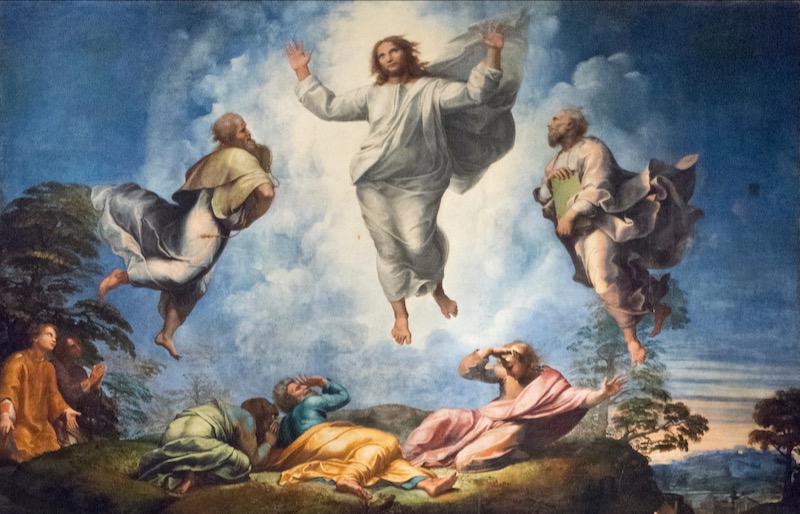The Transfiguration is recounted by all three synoptic gospels (Matthew, Mark and Luke) in closely similar detail and at precisely the same point in the unfolding narrative. That can be said of only a handful of episodes. But what they all have in common is that they are crucial to the Church’s understanding of who Jesus is.
The Transfiguration is one such episode; and yet, few episodes in the gospels are more misunderstood. By far the most common misunderstanding is to see its principal importance as a revelation of Jesus’ divinity. It is, indeed, a revelation and, of course, Jesus is divine. But the misunderstanding lies in thinking that it’s a revelation of the real Jesus, as opposed to the human Jesus: the divine Jesus, that is, who, until now, has been concealed by his humanity.
According to this view, Jesus at the Transfiguration allows his human ‘mask’ momentarily to slip, in order to bolster the faith of his nervous and fearful disciples. The Transfiguration is thus said to happen for the disciples’ sake, because of what’s about to befall Jesus – and possibly them – in Jerusalem: it is to reassure them that, in the end, all will be well. Jesus is, after all, God.
But this understanding of the Transfiguration is perilously close to one of the earliest Christian heresies, namely, docetism: the belief that since Jesus wasn’t really human, he didn’t really suffer and die. How could he? He was God. What happened, according to this heresy, is that he went through the motions of suffering and dying. It also corresponds to a certain kind of piety, which itself borders on heresy, a piety that puts more emphasis on the soul than the body, as if the body were a encumbrance, to be despised in life and discarded at death.
What both these distortions have in common is that, like most heresies, including some of the principal Reformation ones, they fail to recognise the full implications of the Incarnation: these distortions miss what the Incarnation tells us about both God and about ourselves. What Peter, James and John see at the Transfiguration is a vision of Jesus’ glorified humanity. They see him as he will be, risen from the dead and ascended into heaven: they see, in other words, not divinity concealed by humanity, but divinity revealed in humanity. That is what happened at the Incarnation: God revealed himself in our frail, vulnerable, human flesh.
The disciples were most certainly given this vision as a reassurance because of what was about to happen in Jerusalem: Jesus would be defeated in his mission to convince Israel of the truth and would pay the price for failure with his life. But it’s precisely in that failure, in the awful reality of his suffering and dying, that he reveals God and is glorified. Peter, of course, can’t begin to accept this, neither here at the Transfiguration, nor earlier, when Jesus told the disciples that he would be put to death in Jerusalem. Indeed, all Jesus’ closest disciples would be scattered in their disbelief and disillusionment. The stumbling block for them was that Jesus would be glorified in his humanity precisely through his acceptance of ultimate failure, through his acceptance of death. His glory would result from his letting go of any notion of success, worldly or spiritual. For us, too, holiness, maturity, begins with the acceptance of failure.
The Transfiguration, then, is first and foremost about Jesus’ glorified humanity, in which God and his infinite love is revealed. But at the Transfiguration, he also shows us ourselves: he shows us the glory for which we were created and the way to that glory. He shows us that to follow him is to embrace our God-given humanity and to accept, as he did, the consequences of being fully 3 human, the consequences of loving, in other words, in the unloving world that we’ve fashioned around us. And that’s why this gospel, describing the Transfiguration, is always read on the second Sunday of Lent. Just when our Lenten penance is beginning to bite and the novelty’s wearing off; when the five weeks of Lent feel like five years, we’re reminded what Lent’s for: to re-set our compasses, to help us to set our hearts on God; to free us to love Him and one another more ardently, in generous deeds, not just fine words



 Loading ...
Loading ...
What do you think?
You can post as a subscriber user ...
User comments (0)